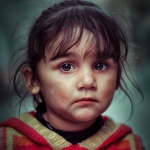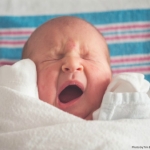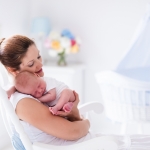Earlier this week, a deadly explosion erupted at an arena in Manchester, England, where the American pop singer Ariana Grande was performing. One of the most horrifying aspects of the Manchester bombing is that this act of terrorism seemed to target women and children. Among the injured and dead are young women, children and teens, and parents waiting to pick up their children. The tragedy unfolded during what was supposed to be a carefree and joyous evening.
We extend our condolences to the families who lost loved ones on Monday and our wishes for full recovery to those who were wounded. We wish to express support for the people of Manchester, England, whose community has been stunned by this violent event.
This tragedy has stunned and horrified the community of Manchester, and has received intense national and international coverage on television, the internet, and social media. And because Ariana Grande has a huge fan base of teens and young women and a huge social media presence (46 million followers on Twitter and 106 million on Instagram), it is nearly impossible to shield our children from the grisly details of this tragic event. After such an event, many parents will undoubtedly find themselves called upon to provide explanations and comfort to their children.
How to Help Children Cope with Traumatic Events
The impact of this tragic occurrence will have effects on many levels. Those most closely involved are at greatest risk for posttraumatic effects, but this tragedy has the potential for broad consequences. In these types of tragedies, individuals even far away may experience emotional symptoms. As a result of studies conducted after the 9/11 terrorist attack, we have learned the following:
- Tragedies can have a profound effect on those who are not present at the event.
- While the traumatic effects may be greatest to those directly involved, there appear to be notable effects upon those who can identify with victims.
- Children who are exposed primarily through television coverage can have event related stress, with symptoms sometimes lasting years.
Some recommendations for parents helping children in the aftermath of traumatic events include: (from National Institute of Mental Health: Helping Children and Adolescents Cope with Violence and Disasters: What Parents Can Do, link below):
1) Identifying and addressing one’s own feelings — this will allow them to help others
2) Explaining to children what happened
3) Letting children know it is okay to feel upset
4) Letting children talk about their feelings
5) Keeping normal routines
6) Helping children feel in control (for example, letting them make decisions as much as possible
Take Home Points for Parents
From Dr. Paula Rauch, MD and colleagues at Massachusetts General Hospital, helping children cope can be tailored to the age of the child.
Infants:
- Infants pick up on the anxieties and actions of those around them, so remain calm when interacting with your infant. Keep routines and their environment consistent.
- Infants may be fussy in reaction to anxieties around them.
Toddlers:
- Keep routines consistent.
- TV and radio news exposure should be limited and only in the presence of an adult.
- Offer videos to watch, read books and play with your child.
- If a toddler asks questions about what is going on, answer in simple terms. Make sure your child knows that you are there to keep him or her safe.
Preschoolers:
- TV and radio news exposure should be limited and only in the presence of an adult.
- If your preschooler asks questions about what is going on, answer in simple terms. Make sure your child knows that you are there to keep him or her safe.
- Spend extra time hugging and cuddling your child.
- Play with your child. Connect with friends, or organize a playgroup.
- Do some type of special activity together. Watch a movie, play a game, bake cookies.
School Age Children:
- TV and radio news exposure should be in the presence of an adult.
- Give children plenty of opportunities to talk about what they think is going on, and clear up misconceptions.
- Encourage children to share their feelings and concerns with you. Let them know it’s all right to be afraid and that you will do everything you can to keep them safe.
- Be available, as this age group may be more interested than younger children in the events but less capable than older children of coping and communicating.
- Reassure kids that many people are keeping them safe and that your family is safe.
- Offer special activities or games to them.
Adolescents:
- Listen, listen, listen.
- Watch TV news with them.
- Engage your adolescent in healthy conversation. “What do you think about the events that are taking place in our world today?” “How did you feel when you first heard about this?”
- Share your feelings with them honestly.
- Encourage them to express feelings of anger, and brainstorm with them about how they can deal with those feelings.
These resources can help parents address stress and traumatic symptoms in children:
National Institute of Mental Health: Helping Children and Adolescents Cope with Violence and Disasters: What Parents Can Do
HRSA: After the Emergency is Over: Post-traumatic Stress Disorder in Children and Youth
The Clay Center for Young Healthy Minds: How To Talk With Kids After Bombing At Ariana Grande Concert
Marlene Freeman, MD and Ruta Nonacs, MD PhD
References:
Lengua LJ, Long AC, Smith KI, Meltzoff AN. Pre-attack symptomatology and temperament as predictors of children’s responses to the September 11 terrorist attacks. J Child Psychol Psychiatry. 2005 Jun;46(6):631-45.
Otto MW, Henin A, Hirshfeld-Becker DR, Pollack MH, Biederman J, Rosenbaum JF. Posttraumatic stress disorder symptoms following media exposure to tragic events: impact of 9/11 on children at risk for anxiety disorders. J Anxiety Disord. 2007;21(7):888-902.
Schuster MA, Stein BD, Jaycox LH, Collins RL, et al. A National Survey of Stress Reactions after the September 11, 2001, Terrorist Attacks. N Engl J Med 2001; 345:1507-1512.








Leave A Comment